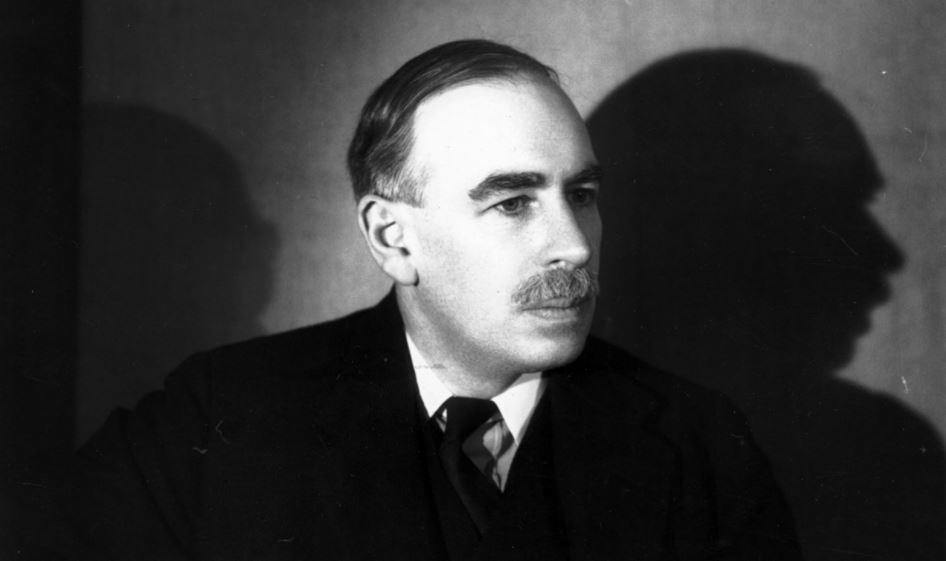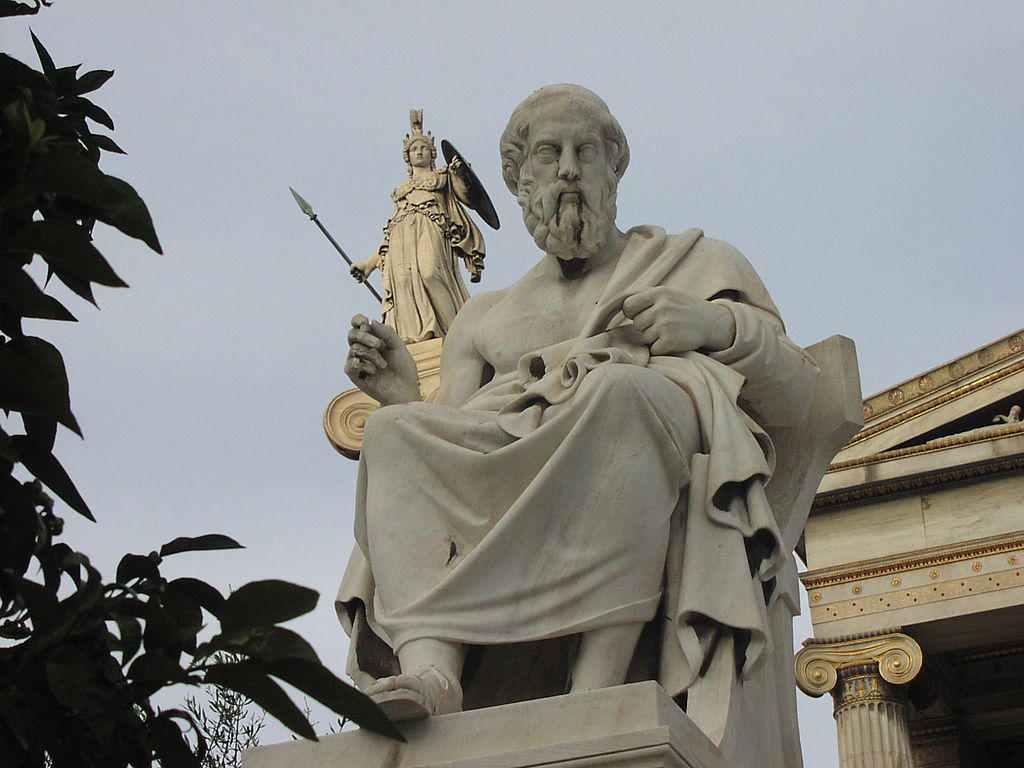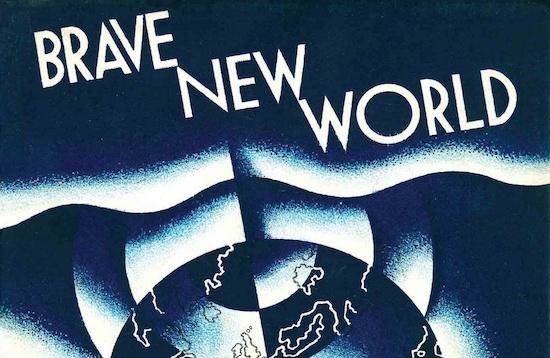In 380 BCE, Plato, transfixed with horror over the instability of democracy, proposed the “philosopher kings” as an antidote; Estonia has dispensed with all that and is taking us toward a new horizon in the sphere of government, Gilbert Morris writes.
Democracy is under threat across the world, both in the old democracies established since 1945 and in the new democracies that emerged after 1989; the citizen seems exhausted with every type of government, whether it’s liberal, conservative or neo-liberal.
Advanced technologies offer the option of putting the citizen in charge through real time participation. Yet, that too is fraught with questions.
We all know of and marvel at Estonia’s advancement since 1990, to its present situation, as probably the most ICT-rich nation on earth. The question is, what can it mean for the world?
The philosophical meaning of Estonia’s e-government
Here it is not my aim to address the specific components of Estonia’s e-governing infrastructure. I will not explain its processes for elections – which are now also held online – or the health records initiative on the blockchain, or its innovative e-residency programme. Instead, I wish to set a pre-text for these developments in the context and as a species of political science by means of situating Estonia’s accomplishments by means of the central questions of the history of political philosophy.
Some may say that Estonia’s approach was not philosophical; that it’s the practical realities of the collapse of the Soviet Union that drove Estonia’s self-effacing strategies. But all organising actions have philosophical foundations. Here I have the assistance of the world’s third most famous – after Adam Smith and Karl Marx – but perhaps most effective and widely practiced economist: John Maynard Keynes.
Keynes said – in the last paragraph of his “Theory of Money” – of those who imagined their practical actions as being disconnected from the flow of the history of philosophy: “Practical men who believe themselves to be quite exempt from any intellectual influence, are usually the slaves of some defunct economist. Madmen in authority, who hear voices in the air, are distilling their frenzy from some academic scribbler of a few years back.”
There are no truer words: It suggests that every organising human action is already scripted in the history of ideas; and any success in the organisation of human society – although not final and always in need of further continued innovation – answers many imperceptible questions while raising yet more intractable ones.
Estonia’s e-governing solutions are solution for populism?
Across the theatre of world politics today, populism is not merely on the rise. Rather it has had an impact on the recent characterisation of national politics from the US, to Brexit in the UK, to autocracy in Turkey and the Philippines; where the lurch toward autocracy has emerged as a reaction to frustration with democratic systems. The late American philosopher, Richard Rorty, forecasted this problem in a forgotten book – “Achieving Our Country” – that was nonetheless prescient:
“Members of labour unions, and unorganised unskilled workers, will sooner or later realise that their government is not even trying to prevent wages from sinking or to prevent jobs from being exported. Around the same time, they will realise that suburban white-collar workers – themselves desperately afraid of being downsized — are not going to let themselves be taxed to provide social benefits for anyone else. At that point, something will crack. The non-suburban electorate will decide that the system has failed and start looking for a strongman to vote for – someone willing to assure them that, once he is elected, the smug bureaucrats, tricky lawyers, overpaid bond salesmen, and postmodernist professors will no longer be calling the shots.”
Something has, indeed, “cracked”. People seem to have lost belief in representative democracy – believing that no matter the party ideology or the personal integrity of the new “strong man”, he has become a necessary evil because the system of representative government itself is unresponsive, diseased and incapable of reform.
People seem to have concluded that anyone – no matter their character – who can attack, destroy or disrupt the cosy presumptions that generate exclusive conveniences in the system of representative government is fit for leadership.
Therefore, there is – mounting evidence and – a great risk that the people will be disappointed once again; as their lurch to the extremes in search of relief; in search of policies that return them to the possibility of belief, not merely in the political system, but in the prospects for their lives, is likely to prove unfruitful.
To my mind, as a general case, Estonia’s e-governing initiatives provide a rational basis for citizens to interact with government in such a manner and to such a degree that it appears to me to hold primacy in any antidote to populism.
In pursuit of efficiencies, openness and transparency both retail in accountability. Estonia’s e-governance platforms emerged and evolved toward these ends, motivated by crisis; which is to say: “Necessity was the mother of e-governance in Estonia.”
However, what was born of necessity has become a governing principle in Estonia; and by all accounts, the Estonian model is coming under pressure to enact a further evolution: to mature beyond e-governance into the full panoply of e-democracy.
This raises a fundamental question: is Estonia’s e-governing platforms significantly, but merely an “ICT-government” or is it e-democracy?
If the answer is the former, it means just that Estonia’s government has upgraded the technological mechanisms for interaction between citizens and government through advanced information and communicative technologies. If it is the latter – e-democracy – then, Estonia’s e-governance is an answer to longstanding questions with which philosophers have struggled for over 2,000 years. Questions which concern the political organisation of human societies.
I have come to believe that – despite whatever Estonia believes it is doing – it has in fact cultivated the threshold of a new advanced form of democracy, that is an answer to the despondency of democratic populations, exhausted by representative democracy.
Political philosophy and populism
Estonia’s citizen-centric model offers an alternative conceptualisation of political systemisation compared with what we have known in the past.
In “The Republic”, Plato calls for the “philosopher king”. It was not that Plato was exercising a mere fetish for monarchical powers. Rather, he was attempting to solve a problem – he recognised the destructive effects of populism (on which Edmund Burke would later expound in relation to the French Revolution), and that its inevitable failure could lead to an abject failure of a political system.
Invariably, all forms of populism – it could be said – from mere inward-looking and pseudo-nostalgic political rhetoric (as Adolph Hitler used) to full blown revolutionary rhetoric, they are more often genuine reactions to actual problems, whose populist solutions are almost guaranteed to fail.
The result of this failure – once the people have tried varieties of forms of governments or political parties and conclude they are much the same – is political apathy, factionalism (of which James Madison warned in Federalist No. 10, in the Federalist Papers), and finally a political tribalism, substituting the state for “strong man” personalities; the opposite of Plato’s philosopher king.
Plato, inspired by Egyptian caste systems, modified their structure to cultivate the idea of his philosopher kings: persons of special proven character. They were “wisdom-lovers who could be trained to manage the state”. This, to avoid the “politics of spoils”, in which the loudest, least educated classes of citizens in a democracy end up choosing one of themselves or anyone who promises them, what spoils the rich and powerful appear to have enjoyed to the exclusion of the languishing masses.
This approach, Plato thought, revealed the potentiality of the moral bankruptcy of the polis, as much as it could lead inexorably to the bankruptcy of the state; as in the age of the Greeks, making the state vulnerable to external forces. Factionalism did in the end riven the Greek political consensus. But it was the Roman Empire that became the prime example of Plato’s fears.
There, populism exploded into a bacchanalia of “bread and circuses”, all aimed at keeping the people amused amid their political emaciation; and more importantly, keeping those amusing them in power, even as the state and its state of affairs declined.
The beginning of any solution to these problems include transparency, accountability and efficiency in all government processes. The technology platform is merely the delivery mechanism, and a physical instantiation of a philosophical resolve.
Estonia’s e-government platform now presents this option in ways that are unprecedented in the modern world. It has managed to create a digitised polis, more democratic than Plato would have imagined, in which the digitised – e-governing – platforms establish a high benchmark for transparency and accountability.
Let’s take a simple example of Estonia’s e-elections suite of technologies. This alone would eliminate – largely – the costs and uncertainty of elections for over 150 nations in the world.
In regions like the Caribbean, the e-elections suite of technologies would generate a new integrity in elections – for the ease of voting, clarity of count and lower costs. Given the several archipelagos and broad communitarian arrangements – such as the Eastern Caribbean Economic Community and CARICOM – these constructs could also discover new relevancies in their operational aims and objectives; such as interoperability in cross-referencing databases.
I confess that my argument and intention here is even more ruthless than may at first appear: I am suggesting that Estonia’s achievements – even if they are short of e-democracy – are sufficiently disruptive of the old political arrangements, that we may now contemplate a wholesale rejection of the presumption of “representative democracy” as imagined in the Enlightenment. I assert further that such a rejection be enforced in preference for digital participatory democracy, as was imagined in concept by Jean Jacques Rousseau (1712-1778).
Rousseau’s concepts of participatory democracy were an attempt – if I may put it in terms of the history of ideas – to splice the ideas of Thomas Hobbes with those of Karl Marx.
That is a mouthful.
But here is the practical implication: Thomas Hobbes (1588-1679) thought the idea of the people governing and the government serving was naive to the point of foolishness. He thought that once government was instituted, it would make itself the priority – a Leviathan – and the citizens could survive only through obedience and feckless loyalty. On the other hand, Marx’s romanticism outlines the evolution of the state into a nirvana of political harmonies out of the decline of the power relations of capitalism into a proletarian paradise. Hobbes’ resigned, pliant citizen becomes Marx’s noble proletarian; who escapes Hobbes’ dictatorship through the proletarian paradise.
Rousseau rejected – implicitly – the ideas of Hobbes and Marx, and in the full disquisition of his matured political thought, he advocated the idea of full participation of people in their governance.
There is much to be explained in such a notion. However, I emphasise here – with laboursome petition – that Estonia’s e-governing platform is the first practical means we have in the world, already in various stages of execution, beyond old concepts of democracy, and even beyond mere “government-by-clicks”, to justify the rejection of nearly all political organising theses from Plato to the Enlightenment, capable of cultivating and ensuring a board realisation of participatory e-democracy.
The Estonian imperative
In the case of e-governance, there is both an “Orwellian” and a “Huxleyan” risk. George Orwell – the author of among other books, “1984” and “Animal Farm” – held a severe distrust of governments with technological advantages that exceeded the citizens access of ownership of the same. He imagined it would lead – inexorably – to government over-lordship, through technological dominance.
Adolphus Huxley thought differently: he imagined in “A Brave New World” that the risk in the new technological world was not an over-lording government, but – in an eerie forecast of social media, he thought people would give up their information willing, handing power over to the technological advanced state, for nothing.
It is right to ask in which direction is Estonia’s e-governance model leaning; with the understanding that different governments could drive the citizen experience in different ways.
There is a philosophical argument in Estonia itself concerning the meaning of its e-governance platform in political terms.
One argument is that Estonia’s chief accomplishment is efficient government services and nothing more. And whatever democratic characteristics are exhibited by or through the e-governance platforms, are and were already inherent in Estonian democracy.
The alternative argument says: the very launch, advancement and maintenance of an e-governance system implies the lets and fetters of democracy. Here it is argued that even if the Estonian e-governance model makes primary the delivery of efficient citizen services, already that is a re-balancing of the power relations between those who govern and those who are governed; since the system obliges the Estonian government to address the needs of its populace in real terms and real time, consistent with the capacities of the platform.
I surmise that Estonia must undertake a categorisation exercise.
First, it must make explicit the objective, method and pathway to e-democracy in an explicit manner, even if its aspirational. This categorisation must confirm by demonstration that its e-government platforms are not mere platforms for citizen services through ICT; showing instead that the e-governance platform is characterised by and as pathmarks toward e-democracy, in which the weight of political power is transmuted from government to the citizen; so to the advantage of the governed, as it is reduced for those who govern.
Second, there are structural considerations. For instance, terms like transparency and accountability are used often in lists of administrative priorities, and often separately. But accountability and participation are the same mechanism. Platforms designed for greater participation are accountability platforms. Transparency and accountability are therefore active information exchange mechanisms aimed at lessening the advantage of the giver of information against the receiver of the same; devolving power to the receiver to both access and assess information.
The discordant manner in which the terms are referenced often is a measure of how little we have thought through the practical implications of a genuine participatory political system and the jobs such terms must do in defining such a system.
Conclusion
There is a further and crucial consideration: Estonia adopted many of its participatory democracy features as part of the “innovator’s imperative”; when – in its case – necessity mothered invention. They were not philosophising. That means, transparency and accountability were unavoidable tag-along and drag-along imperatives, implicit in Estonia’s innovator’s solution-building. Insofar as Estonia’s contacts with other nations is primarily the promotion of its platform, those nations may not be motivated optimally.
This questions whether the Estonian experience is transferable. Other nations seeking to import the Estonian successes would have to have to accept, deliberately and intentionally, the thesis put forward by Dr Liia Hänni: that greater democratisation is implicit in the Estonian e-government platforms. That is, governments that desire Estonia’s reputation as an e-governing centre, but do not wish to give up control, face transparency or deal with the political consequences of accountability, such governments will adopt these platforms and their suites of technologies as trophies rather than tools.
This tool imperative is central to Estonia’s citizen-focused, unperturbed extension of its e-governing technologies to every sphere of its national life.
Estonia’s achievement therefore not only addresses this two-millennia problem of human political organisation, it establishes a threshold in practical terms and now offers us the best chance to cultivate a new type of democracy, in which governments resolve to reduce their control and open themselves to the integrity which accountability brings; even as we develop a new narrative of political science both to describe, enhance and share it.
I
The opinions in this article are those of the author. Cover: An Estonian woman using her ID card (the image is illustrative).






